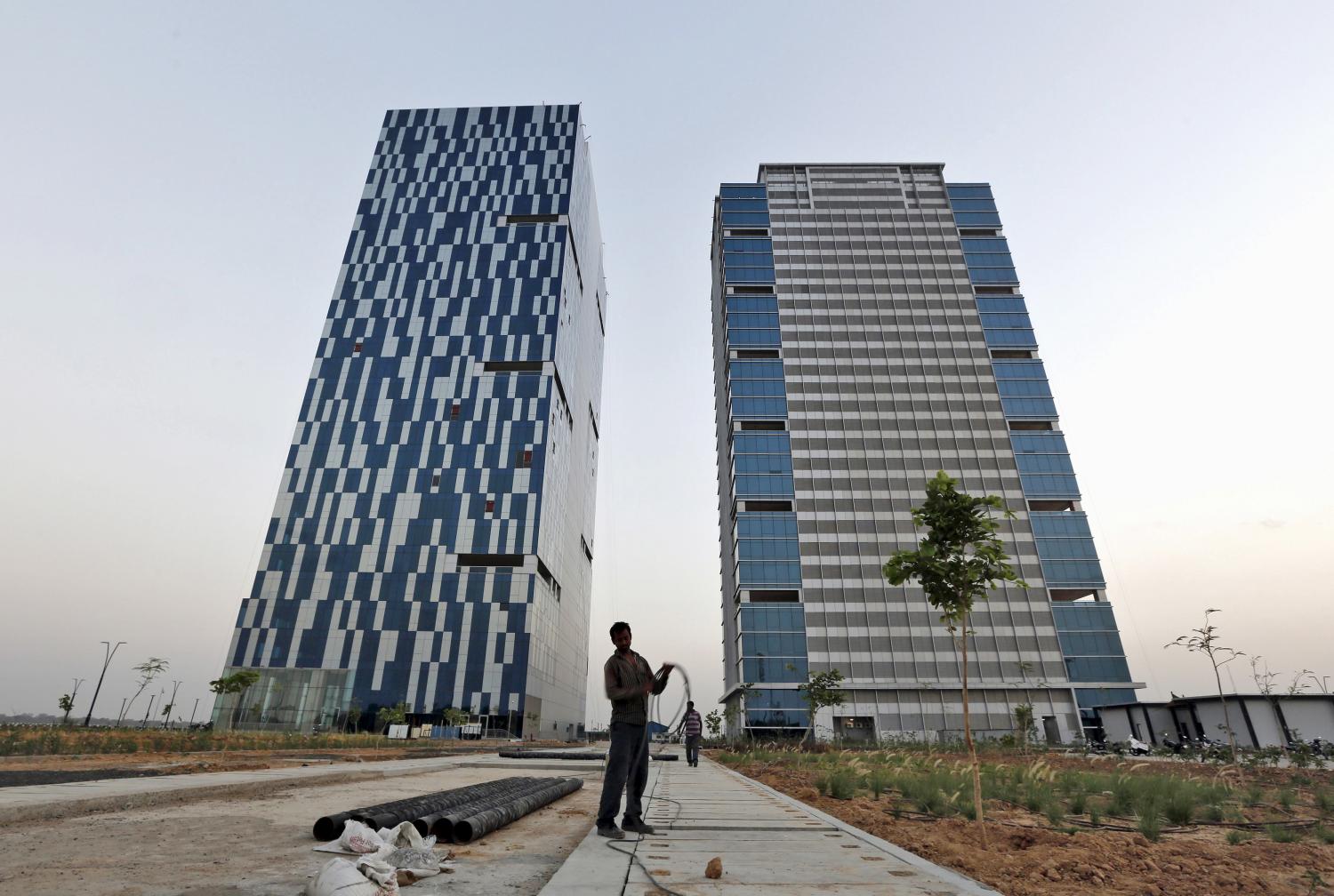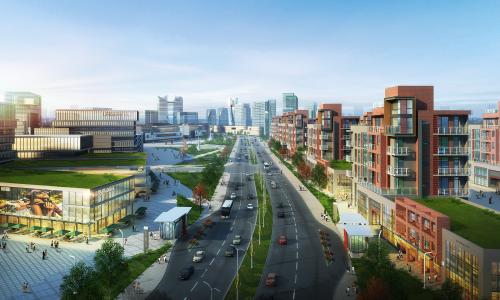This commentary originally appeared at Live Mint.
Prime Minister Narendra Modi’s bold commitment to build 100 smart cities throughout India is a worthy centrepiece of his urban agenda. The promise of this tech-savvy approach is greater livability, sustainability and improved public accountability. Such an extensive modernization effort would also deliver jobs and attract new investment through several important global partnerships, including a new partnership with the US government and industry. The challenge facing the initiative is to make sure it responds to the unique challenges within India’s cities and not simply clone efforts going on worldwide.
For global firms providing smart city services, the Indian initiative offers a unique opportunity to invest in a rapidly growing market. By one estimate, the smart cities market worldwide is projected to hit $1.5 trillion by 2020. Partly because of its enormous potential, a multitude of experts, analysts, public and private firms are rushing into India with ideas ranging from the use of information and digital infrastructure to manage the energy and water use in buildings, to the creation of intelligent transport networks to minimize congestion.
But a technology-first approach to smart city development, without a clear understanding of local conditions, traditions and realities, will often fail to result in sustained, community-wide change. From the perspective of individual private firms, a smart city is often whatever that firm happens to be selling because local city governments do not have the capacity to be good business partners and navigators of the public interest. If the idea of a “smart” city is limited to the deployment of technology-driven solutions to urban challenges, then it will fail to meet private industry’s ambitions for effective uptake and public leaders’ desires for local impact. With this in mind, the India and the US can act—not top-down but bottom-up—to deliver the true promise of smart cities.
Today, most of the leading global best practices around smart cities are found in developed cities. Places such as Barcelona, Helsinki, Toronto, Singapore and San Francisco are often at the top of most lists of “smart cities” because they have the resources and expertise to be good business partners and navigators of the public interest. But the challenges and opportunities for smart cities in developing countries like India—that are urbanizing at a dizzying pace—need to focus more on the basics: clean and reliable energy, safe and secure streets, transparency and citizen engagement. A better example to watch may be Nairobi because of its focus on broadband, mobile apps and government efficiency.
Governance of cities is critical to the sustained prosperity of their citizens and economy. In this regard, it is important to contrast and recognize the different role of each level of government within India compared to other countries. While globally, most smart cities are governed at the city level, this is not the case in India. Smart cities in India are part of a national effort driven by New Delhi, but it is the states that still wield great authority. At a recent event with Indian members of Parliament in Washington D.C., Kalvakuntla Kavitha, one of the MPs, remarked that nearly 70% of government decisions are made at the state level. State governments are at liberty to engage directly with other countries to attract foreign investment and are largely responsible for all infrastructure development. This is a welcome development that has been driven by the recent devolution of power by the federal government to the states. Further devolution of authority to the cities and local municipalities, however difficult, is critical for the success of the smart cities initiative. Significant and urgent political reforms are required for this to happen in the country.
Nevertheless, the Indian smart city efforts need to recognize the economic differences between its cities because off-the-shelf technology solutions are not viable and will vary in each market. Take the three cities that are part of the US-India smart city partnership, Ajmer, Visakhapatnam (Vizag) and Allahabad. Vizag has, by far, the largest economy (more than twice as large as Allahabad and four times that of Ajmer) of which trade and transport are the largest component. Allahabad has a clear specialization in so-called “unregistered manufacturing” which is driven by small-scale enterprises. Agriculture was the largest industry in Ajmer in 2000 and has remained a relatively stable and core strength of the local economy over the past decade.
These specializations are important because smart cites in India should not be about starting the places over in detached nodes, physically separated from the rest of the city, like in Nairobi and Masdar City. Rather, smart cities require sharp self-awareness: each Indian smart city should develop or update a strategic plan for growth, one that has clear goals towards basic service improvement, job growth and productivity, economic inclusion, and sustainability and resilience. The technological deployments under the smart city rubric should then aim to deliver on those goals.
Make no mistake, India has an opportunity to make the three cities the model for smart city development. But that model means leveraging private resources and working with partners at all levels of government to help the cities define for themselves what their technology-driven future looks like.
The Brookings Institution is committed to quality, independence, and impact.
We are supported by a diverse array of funders. In line with our values and policies, each Brookings publication represents the sole views of its author(s).












Commentary
Op-edUniqueness of India’s smart cities: Indian smart city efforts need to recognize the economic differences between its cities
December 11, 2015